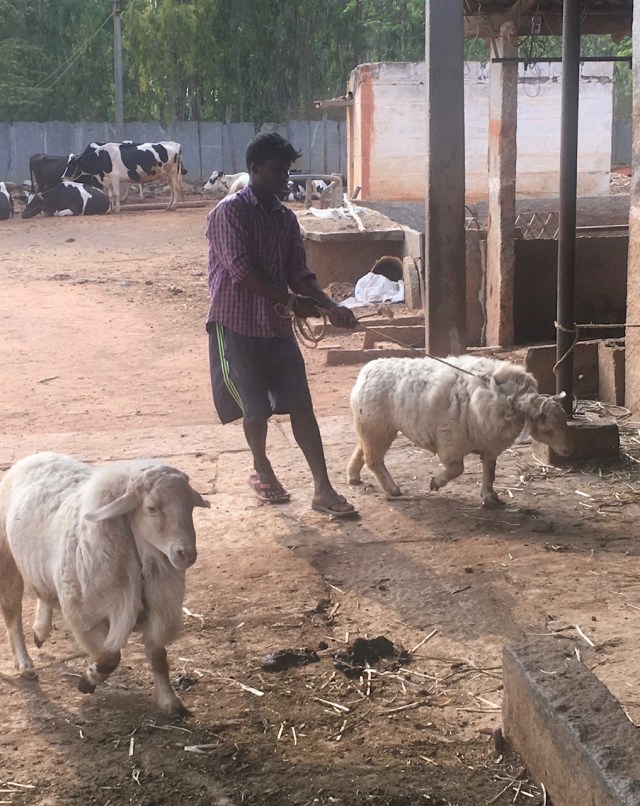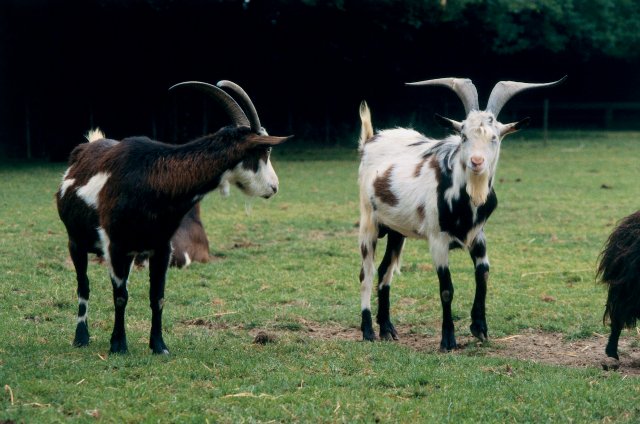Home \ Knowledge Hub \ Focus on \ Focus On… Peste des Petits Ruminants – understanding the disease


01 Apr 2015
Focus On… Peste des Petits Ruminants – understanding the disease
SHARE

ALASDAIR KING
Executive Director, International Veterinary Health
For the first edition we will consider Peste des Petits Ruminants as this disease has received increasing attention over the last year. This disease is recognized as negatively impacting the livelihoods and food security of millions of farmers globally, and the OIE has identified it as causing over $1.45 billion losses every year. With more vaccines available it has become more important to understand about the lineages of PPR and where they can be found. There is a good degree of cross-protection between the lineages. We discuss the circulation of the lineages and changes since the eradication of Rinderpest.

Worldwide impact
At the 2014 OIE General Session in Paris, the members voted for the adoption of a Resolution for the global control and eradication of Peste des Petits Ruminants (PPR). This focus from the OIE has been driven by the unprecedented spread of the disease over the last couple of decades and the recognition that this disease is having a major impact on small holders, preventing many from breaking out of the poverty trap and causing significant socio-economic damage.
From first being identified in 1942 in the Cote d’Ivoire on the west coast of Africa, PPR has now spread southwards, northwards and eastwards, with around 70 countries now affected. With 80% of the world’s sheep and goats coming from the regions impacted most by the disease then this growing threat means that millions of small ruminants are now considered at risk. It has been estimated that the disease is causing between $1.45 billion to $2.1 billion in losses each year. And this has a disproportionate effect on the poorest farmers in the world, with 330 million farmers in Africa and Asia directly relying on sheep and goats.

Lineages
Early reports of PPR suggested that there were four lineages and that these were restricted to certain geographic areas, Lineage I affecting western and central Africa while India and the Middle East saw the circulation of Lineage IV. The geographical origin of the different lineages is likely to have been Senegal for lineage I, Nigeria lineage II, Sudan lineage II, and India for lineage IV1. However, in recent years this distinct distribution has broken down with lineages appearing in new areas. The clearest example of this has been with lineage IV which is now found in northern and central Africa2. Last year a paper reported the genome sequence of an isolate from an outbreak in Ethiopia during 2010 which clustered with other Lineage IV isolates3. In addition the geographic range of PPR has continued to expand, with extensive agricultural losses across China in 20144.
Protection
Interestingly, rinderpest eradication may have had an effect on the recent emergence of PPR. It is possible that exposure to rinderpest was providing small ruminants with a level of immunity to PPR. However, with the eradication of rinderpest, cases of PPR have become more obvious and it has become easier to track and understand the epidemiology of the disease. Part of this improved knowledge is the emerging indication of host range switch, with antigen even being reported in lions5. This is particularly interesting as similar switches in host range were seen after the eradication of smallpox which allowed monkeypox and cowpox to cross to humans. In addition, selection pressure has possibly lead to extinction events, as suggested by the absence of lineage I outbreaks.
Current research indicates that there is a strong level of cross-protection between the different lineages. This is not overly surprising as these lineages are all within the same serotype, with only a small antigenic divergence. This is consistent with our knowledge of other paramyxoviruses. This means that PPR vaccines can be expected to give protection no matter which lineage the vaccine strain is derived from, an expectation reinforced by the fact that the rinderpest vaccine also produced short-lived immunity to PPR6. It is therefore more likely that the limited reports of lack of protection are associated with storage failures and poorly executed vaccination programmes, especially related to the low temperature stability of certain available vaccines.
High quality, well purified, vaccines appear to be more temperature stable. As well as stimulating better immunity with fewer post-vaccination reactions, these vaccines can cope better with the rigours of vaccination programmes in hot and remote areas. This provides a way forward with the desire to eradicate PPR in the next 15 years.
- Molecular evolution of peste des petits ruminants virus, Emerging Infectious Diseases, 20, 12, pp. 2023-2033, 2014, Murali Muniraju, Muhammad Munir, AravindhBabu R. Parthiban, Ashley C. Banyard, Jingyue Bao, Zhiliang Wang, Chrisostom Ayebazibwe, Gelagay Ayelet, Mehdi El Harrak, Mana Mahapatra, Geneviève Libeau, Carrie Batten, Satya Parida
- Peste des petits ruminants virus, Tunisia, 2012–2013, Emerging Infectious Diseases , 20 ( 12 ) pp. 2184 – 2186, Sghaier, S., Cosseddu, G.M., Hassen, S.B., Hammami, S., Ammar, H.H., Petrini, A., Monaco, F., 2014.
- Emergence of Lineage IV Peste des Petits Ruminants Virus in Ethiopia: Complete Genome Sequencing of an Ethiopian Isolate 2010, Transboundary and Emerging Diseases, Nov 14. Epub 2014, M Muniraju, M Mahapatra, G Ayelet, A Babu, G Olivier, M Munir, G Libeau, C Batten, A C Banyard, S Parida, 2014
- Peste des petits ruminants virus, Eastern Asia, Emerging Infectious Diseases, 20 ( 12 ) pp. 2176 – 2178, Banyard, A.C., Wang, Z., Parida, S., 2014.
- Peste des petits ruminants virus detected in tissues from an Asiatic lion (Panthera leo persica) belongs to Asian lineage IV, J Vet Sci, 13:203–6, Balamurugan V, Sen A, Venkatesan G, Bhanot V, Yadav V, Bhanuprakash V
- Peste Des Petits Ruminants Virus Infection of Small Ruminants: A Comprehensive Review, Viruses, 6, 2287-2327, Naveen Kumar , Sunil Maherchandani , Sudhir Kumar Kashyap, Shoor Vir Singh, Shalini Sharma, Kundan Kumar Chaubey, Hinh Ly,2014
ALASDAIR KING
Executive Director, International Veterinary Health

